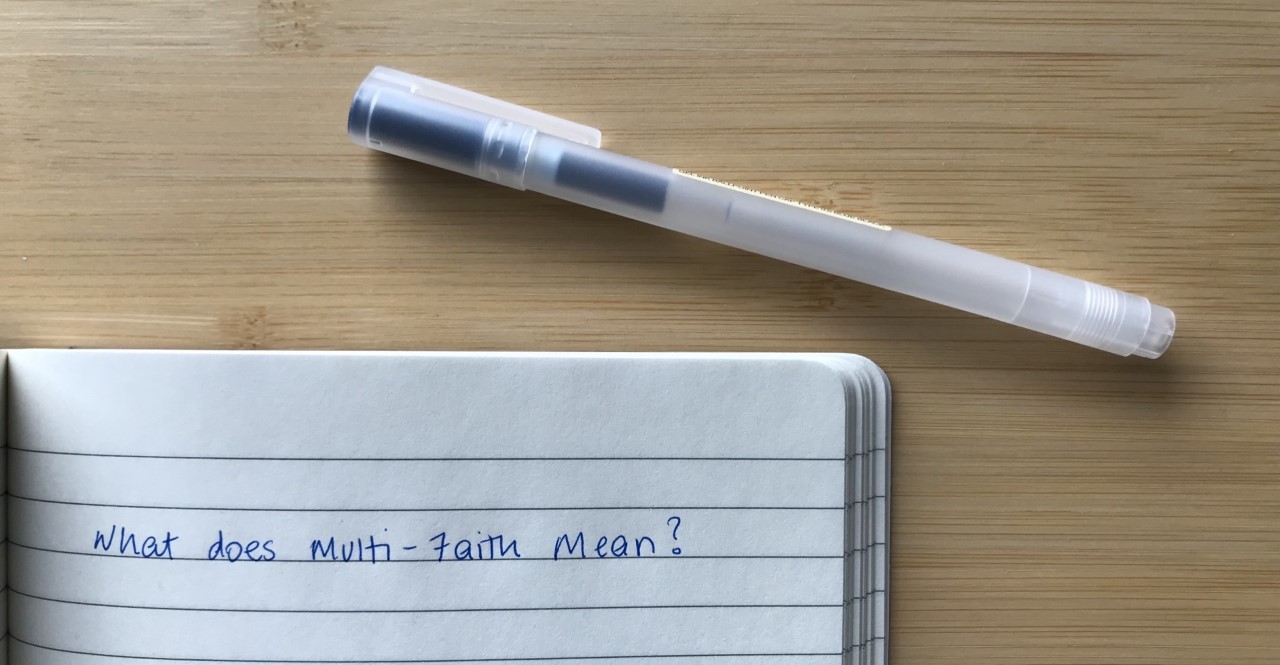As the blogger for the Multi-Faith Center this year, I’ve been thinking a lot more about what the meaning of “multi-faith” truly is. The Multi-Faith Center’s mission statement highlights that the Center works to “support the spiritual well-being of everyone on campus and provides opportunities for people to learn from each other through interfaith dialogue, arts and social justice.” The Multi-Faith Center is a safe space for all members of the university community, regardless of what belief system you ascribe to, that encourages engaging and exploring our individual purposes in life and what gives each of us meaning. This week, with the hope of addressing this question of what is “multi-faith, I conducted a survey amongst our current work study team to consider the way each of us defines this idea and the impact of our experiences at the Center on these definitions.
As I was reading through the responses, each person’s definition was unique, insightful and reflective of the diversity present in our work-study team. There were, however, a few clear ideas that re-occurred as central themes in these reflections. Something that almost everyone emphasized was the idea of respect and openness. Respect is highlighted as a key factor in creating a multi-faith space as it allows individuals to value and consider the beliefs of others in a supportive manner. Respect serves as a building block, facilitating the openness that is also cited as a key feature in the definitions of “multi-faith.” Some of the other really interesting and thought-provoking ideas included in my peers’ definitions were thinking of “multi-faith” as non-hierarchical, tolerant and an ideology of unity and cohesion, all ideas that really made me pause and reflect.
I was curious to explore exactly how the experiences my colleagues have had at the Multi-Faith Center have shaped or influenced the way they define multi-Faith. The programs and the opportunity to interact with supervisors and Chaplains have been cited as impactful, highlighting that multi-faith is not only about giving space to each individual belief, but also about the way that these beliefs come together and the connections that are created between them by the space that they share. Being an active part of creating this kind of space – one of unity and equity – is referenced as an inspiration and being able to engage first-hand in the work that goes into creating the “multi” in multi-Faith, as was so eloquently said in one of the reflections, was highlighted as something that truly allows a deeper understanding of the concept.
It was so inspiring to read the reflections from all of my colleagues as they shared their definitions of “multi-faith” and the way it has been impacted by their work with the Center. It has certainly encouraged me to do some thinking and opened my mind to new ideas and ways of approaching my own work within the Multi-Faith Center. Even though we’re still operating mostly online, the Center has a wide selection of events that I’d encourage all of you to check out. Ram Dass says that “the spiritual journey is individual, highly personal. It can’t be organized or regulated. It isn’t true that everyone should follow one path. Listen to your own truth.” We are, indeed, each walking our own, individual journey but the Multi-Faith Center is a safe space with a community ready to welcome any of you as you continue on your journey to finding your truth. It is place where you can find support, where we can learn from one another, finding the connections in the spaces between us and one that I, personally, am so thankful to be a part of.
-

0 comments on “The Meaning of Multi-Faith”